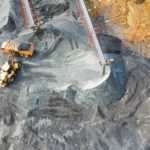The Corporate Sustainability Reporting Directive (CSRD) comes into force at the turn of the year of 2024. The time for consistent and comparable reporting, in line with the European Sustainability Reporting Standards (ESRS) begins. The aim of this new regulation is to ensure that sustainability information is given the same importance and treatment as financial information. This applies at all levels: from data quality, indicators, measures taken, reporting and verification to the responsibility of the board of directors.
Although EFRAG, the European Financial Reporting Advisory Group, has reduced the number of requirements and data requested by almost 50 percent in its latest review, the effort required from companies remains high. Many struggle to keep up with the multitude of ESG requirements and regulations, increasing the pressure on risk and compliance areas.
Even though the 2014 non-financial reporting directive has brought great advances in sustainability, ESG data presents a structural weakness. The CSRD comes into place to change this scenario. From 2024 onwards, companies must comply with the new reporting framework where the green taxonomy becomes topical. It follows the incorporation of the four outstanding EU environmental objectives (Taxo4) :
- Preservation of Water and Marine life
- Transition to a circular economy
- Prevention of pollution
- Protection & restoration of biodiversity & ecosystem
The establishment of these objectives does not come without challenges. In general, financial information systems do not have sufficient granularity to establish a link between the economic activities detailed in the taxonomy and its environmental impact.
Given this situation, the most advanced ESG companies are investing in technologies to robust their systems to keep up with the new market demands. According to Thomson Reuters Institute, organizations are focusing in two main areas:
- Third-party solutions: solutions, not just consultancy. They will seek to understand emerging regulations, due diligence with suppliers and customers or monitor consumers and competitors behavior ;
- Artificial intelligence and machine learning: the aim is to connect data from diverse sources and obtain a more robust ESG analysis.
Beyond reporting, what about other ESG aspects, such as the environmental dimension?
There are several open fronts, but the two main ones will undoubtedly be biodiversity and climate change (the latter is the most worked on and has the most international support).
The latest and most comprehensive report of the Intergovernmental Panel on Climate Change shows that the measures presented fall short of the efforts needed to limit the increase in global warming and comply with the Paris Agreement. There is no doubt that more speed and resources are needed to meet the commitments announced. According to the UN, 76 percent of global greenhouse gas emissions are covered by national commitments to net zero emissions by 2050. What matters, however, is how states and organizations plan to achieve these goals.
How well are companies currently aligning with environmental objectives?
According to The Net Zero Tracker, an entity evaluating the status and trends of net zero emissions targets, underscores that the majority of assessed entities fall short of meeting the essential criteria for a commendable approach, characterized by a robust, reliable, and forward-looking strategy. This entails having a sustained vision accompanied by immediate and imperative measures to achieve a substantial reduction in emissions, ideally targeting the year 2030. Only 4% of organizations do.
This is particularly relevant at a time when commitments seem to be wavering in key sectors for decarbonization, such as transport and energy. Recently, major electric vehicle manufacturers have announced their intention to forgo the ambitious short-term production targets they had set for themselves. Wind energy has become the Achilles heel of renewable energy companies due to a combination of factors such as tight auctions, inflation, interest rates, logistics and technical problems. The loss of market value of the Danish giant Orsted, the world leader in offshore wind; layoffs in the wind turbine manufacturing sector; and the German government’s rescue of Siemens-Gamesa are clear examples of this.
This is an urgent need to speed things up, but this can only be done in an orderly way, using existing clean technologies to achieve safe results. This is only possible if the entire value chain is involved from the outset.
Everyone has a role to play:
- Governments must guarantee competitive prices and stable conditions that encourage the expansion of clean technologies without compromising the economic viability of companies.
- Suppliers must manage complex Scope 3, which challenges companies’ net zero targets. In one case, Apple’s supplier clean energy program has reduced its total emissions by 45 per cent since 2015, as the company continues to grow and aims to achieve neutrality by 2030.
The social dimension of ESG goes hand in hand with the supply chain
Some topics in the social dimension are subject to greater awareness and progress, such as diversity. Other aspects, however, go more unnoticed. For example, the development of resource-intensive technologies driven by the search for clean energy and the push for electrification significantly increases the use of critical minerals, which are scarce and challenging to extract. These resources are generally found in countries with less stringent health and safety and labor conditions. For example, numerous studies link wind and solar energy to forced labor in China.
In 2024, the expected human rights and environmental due diligence directive will help to clarify and work on these aspects. While its transposition will give companies a certain amount of leeway, the effort that needs to be made is not trivial. It won’t happen overnight. Mapping, on an ongoing basis, the entire value chain, identifying potential opportunities, risks and mitigation measures is a lengthy process. It requires engagement and tools that give visibility of what is happening throughout the value chain, beyond audits. It is a complex task. Even more so when the chain is fragmented.
To sum up, 2024, marked by a stronger and more consolidated regulatory framework, will be a turning point. From promises to proof. From the image you want to give your company to what it really is. During this transition, sustainable development will have to compete with other corporate priorities for financial, technological and human resources.

Susana Gallego
Susana has a degree in Industrial Engineer from the UVA and MBA from INSEAD. She is Certified ESG Analyst by EFFAS and Global Chief Communication Officer by ESADE.
She has more than 20 years of international experience in Telecommunications (Telefónica Group) coordinating teams in 17 countries, in areas as Quality, Digital Transformation, Competitive Intelligence, Sustainability and Corporate Reputation. She has positioned Telefónica as an international reference on Human Rights, Responsible Supply Chain, Privacy and Stakeholder Engagement.
Susana has experience in consultancy, and currently, she is a Senior Advisor on Sustainability, as well as the coordinator of the online Professional Certificate on Sustainability at MIT Professional Education. She is also collaborating with Social Investor, the reference online media for sustainable investment.






